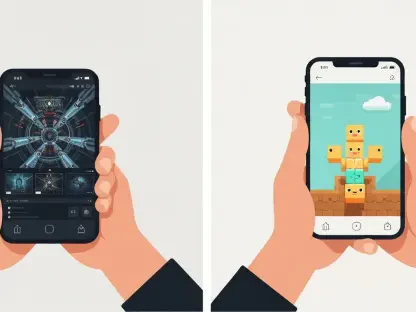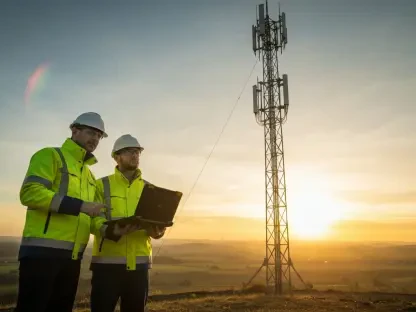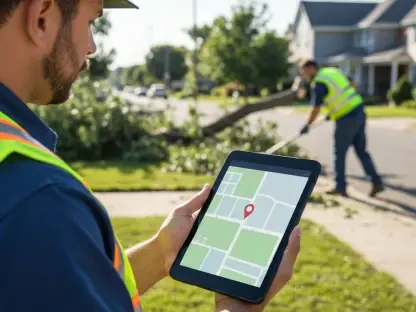T-Mobile, widely known as the Uncarrier, has announced a groundbreaking expansion of its Starlink satellite service to mobile phone users from rival carriers AT&T and Verizon, marking a new chapter in high-speed internet accessibility. This bold move signifies a substantial step towards offering seamless internet coverage in extensive regions of the United States that have long been plagued by limited traditional cellular or Wi-Fi coverage. T-Mobile’s current beta testing phase, now inclusive of customers from these prominent carriers, serves as a precursor to a full-scale launch anticipated to take place later. In an effort to reach a broader audience, T-Mobile also capitalized on a Super Bowl advertisement to promote the expansive capabilities of its Starlink satellite service.
Expanding Coverage with Starlink Satellites
The Starlink satellite service leverages an intricate network of low-Earth orbit satellites, operated by SpaceX, to provide high-speed internet access in areas traditionally underserved by cellular and Wi-Fi networks. By strategically utilizing Starlink’s 300 satellites, T-Mobile seeks to cover a massive 500,000 square miles of US territory that has historically faced cellular dead zones. This ambitious expansion aims to bridge the digital divide, ensuring that even the most remote and rural areas have reliable access to high-speed internet services.
Initiated in January, the beta testing phase offers a six-month window for iOS and Android users to evaluate the service’s performance and contribute valuable feedback. Running through July, this extended beta period allows T-Mobile to gather extensive user insights, fine-tune service capabilities, and implement necessary improvements before the official launch. By openly inviting feedback from users across different carriers, T-Mobile aims to deliver a robust and user-centric internet solution capable of transforming connectivity across underserved regions.
Pricing and Plan Details
The pricing structure for T-Mobile’s Starlink service is designed to cater to a wide range of users, providing affordability and value across various plans. For T-Mobile customers, the service is included at no additional cost with the premium Go5G Next plan and its variations, including Go5G Next 55+ for older adults and Go5G Business Next for business users. Additionally, subscribers to the Go5G First Responder plan, as well as other premium-rate plans, can access Starlink without extra charges. For other T-Mobile plan holders, the service comes at a monthly cost of $15.
To encourage early participation, T-Mobile is extending an Early Adopter discount to users who sign up for beta testing before the end of February, reducing the price to $10 per month. For AT&T and Verizon customers, accessing the Starlink service will cost $20 per month, positioning T-Mobile as a competitive alternative in attracting users from rival carriers. This inclusive pricing strategy not only fosters widespread adoption but also highlights T-Mobile’s commitment to offering high-speed internet solutions to a diverse user base.
Beta Testing Features and Capabilities
During this beta testing phase, users are initially restricted to sending plain text messages, reflecting the service’s early developmental stage. Nevertheless, T-Mobile has ambitious plans to expand Starlink’s capabilities to support multimedia text messaging, including photos and videos, before the beta phase concludes. Additionally, the service is expected to accommodate apps that do not necessitate high-speed data connections, such as WhatsApp and various mapping and trail applications, enhancing its utility during testing.
In a recent interview with the Washington Post, Mike Katz, T-Mobile’s president of marketing, strategy, and products, elucidated the company’s forward-thinking vision for Starlink. He envisioned a future where the satellite service could handle more data-intensive activities, including FaceTime video calls and streaming movies, contingent on the successful deployment of additional satellites. This proactive approach underscores T-Mobile’s dedication to continual service enhancement and underlines their commitment to delivering an unparalleled user experience.
Seamless Activation and Device Compatibility
T-Mobile’s Starlink service is designed with user convenience in mind, featuring a seamless activation process that sets it apart from other satellite-based services. When a user loses traditional cellular coverage, their phone automatically connects to a Starlink satellite without requiring manual intervention, ensuring uninterrupted internet access. This user-friendly activation simplifies connectivity, making T-Mobile’s Starlink service a highly attractive option for users seeking hassle-free internet solutions.
For participation in the Starlink beta, users must possess an iPhone or Android phone from the past four years. T-Mobile has specified compatibility with various models, including Apple iPhone 14 and newer, Google Pixel 9 series, several Motorola models, and a host of Samsung Galaxy devices. Additionally, iPhone users are required to update their devices to at least iOS 18.3, while Android users should be running version 15. This extensive compatibility ensures widespread access to the beta program, allowing a diverse range of users to engage with and evaluate the service.
Joining the Beta Testing Program
T-Mobile, commonly known as the Uncarrier, has introduced a significant expansion of its Starlink satellite internet service. This groundbreaking move will now make high-speed internet accessible to mobile users from competing carriers like AT&T and Verizon. This initiative marks an important milestone in providing reliable internet coverage, especially in vast areas of the United States that have historically struggled with limited traditional cellular or Wi-Fi services.
Currently in its beta testing phase, T-Mobile is now including customers from these leading carriers, paving the way for a broader, more comprehensive launch expected in the near future. In a strategic push to reach a wider audience, T-Mobile leveraged a high-profile Super Bowl advertisement to showcase the extensive capabilities and benefits of its Starlink satellite service. This advertising effort highlights the company’s commitment to bringing seamless internet access to underserved regions, ensuring that more people can stay connected regardless of their location.









